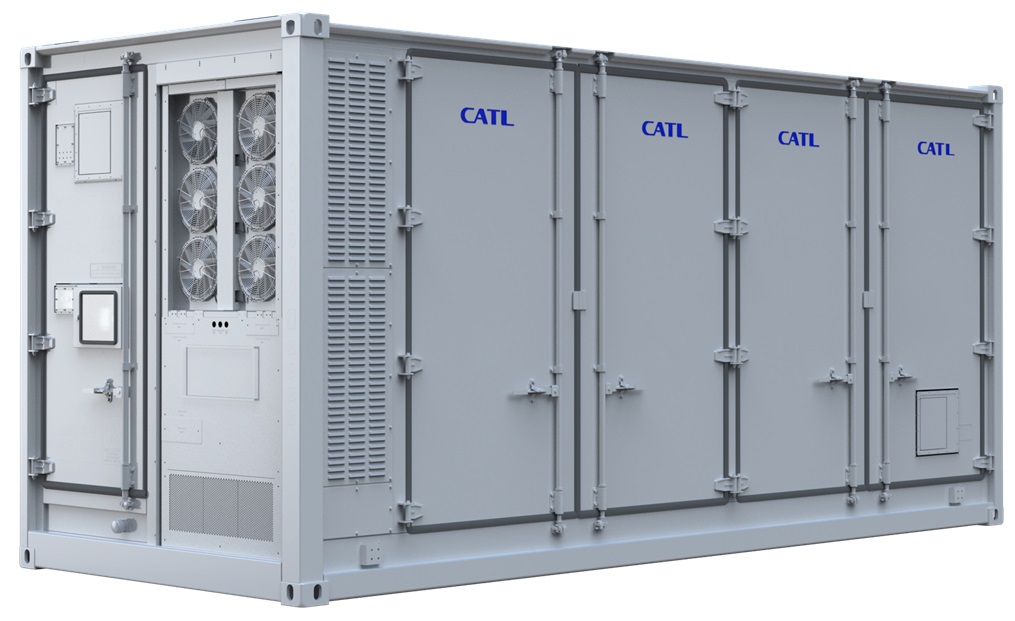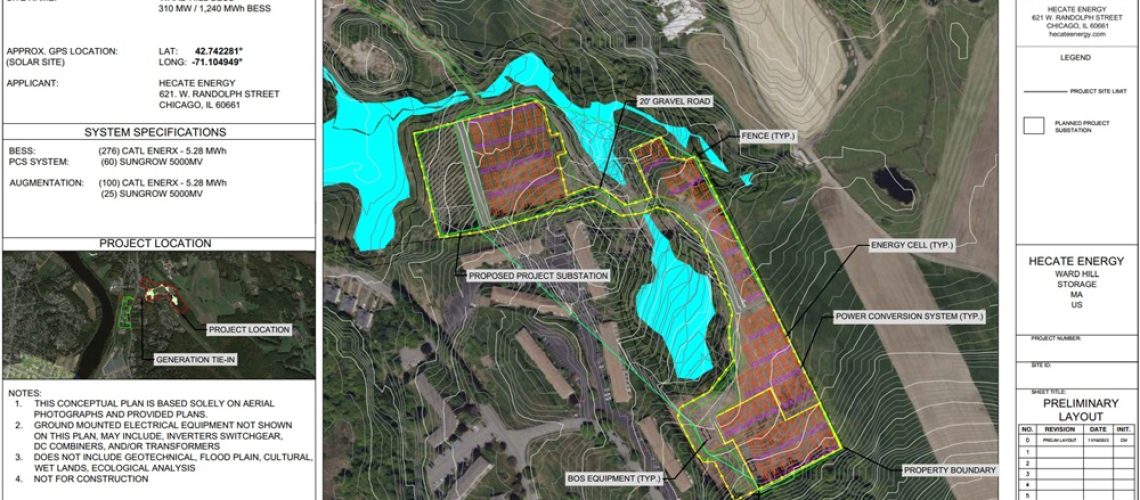Hecate Energy advances the Ward Hill BESS through Haverhill’s zoning process, focusing on wetland classifications surrounding the installation.
Hecate Energy is progressing through the permitting stages for a proposed 310 MW / 1.24 GWh energy storage project by Contemporary Amperex Technology Co. (CATL) in Haverhill, Massachusetts. According to a recent press release, the company has submitted an Abbreviated Notice of Resource Area Delineation to Haverhill’s Conservation Committee, aiming to define the boundaries of wetland resource areas for the Ward Hill BESS Project.
The project layout reveals that the batteries are divided into two main sections, strategically placed amidst designated wetlands and agricultural zones. The accompanying Field Delineated Resources map identifies these wetlands in green in the above map, and yellow in the below map. Surrounding the wetlands in the below map, red dots mark the 25-foot “No Disturb Zone” setback area, while an orange line indicates a 50-foot no-build zone. A dashed yellow line represents a further 100-foot setback from the wetlands.
Massachusetts recently advanced 800 MWh of energy storage projects after a contentious zoning approval process.
In total, the design calls for 376 CATL EnerX 5.28 MWh energy storage containers. CATL reports that these units boast an energy density of 385 kWh/m² and feature a modular fire protection system that utilizes an aerosol-based extinguishing approach. They are also designed for a service life of 13,000 cycles, with a 25-year guarantee of maintaining at least 65% of their original “State of Health” (SoH), which indicates the residual capacity after extensive use.
CATL attributes the longevity of these batteries to their new 530 Ah lithium ferrophosphate (LFP) prismatic battery cells. The battery lineup also includes the Tener BESS unit, which CATL claims will not degrade during its first five years of operation.
Due to the proximity to wetlands, local zoning may require additional setbacks; however, this is may not affect the project’s capacity, as technological advances in energy storage density would most likely compensate for any spatial constraints. For example, the EnerX unit’s capacity has recently increased to 5.64 MWh from the 5.28 MWh documented in the permit filings. Similarly, CATL’s Tener units have seen capacity upgrades to 6.5 MWh within the same footprint.
 EnerX battery container
EnerX battery container
The project has been submitted to ISO New England for a feasibility study to assess grid connection potential and operational timelines. The project was approved for connection via National Grid’s Ward Hill 345 kV substation. While the project aims for a June 1, 2026 activation, a FERC filing from ISO New England indicates that the necessary transmission upgrades under the Network Capability Interconnection Standard may not be completed until the 2027-2028 Capacity Commitment Period, beginning June 1, 2027.
Popular content




